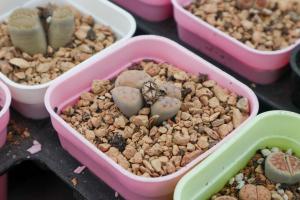Can You Plant Fruit Trees in the Fall in Missouri?
Fruit trees can add beauty and bounty to your home garden or orchard. However, if you live in Missouri, you may be wondering whether you can plant fruit trees in the fall. While it's certainly possible, there are a few factors to consider before you start digging. In this article, we'll provide an overview of the advantages and challenges of fall planting, as well as some tips and methods for successful fruit tree planting in Missouri.
Advantages of Fall Planting
Fall is actually one of the best times to plant fruit trees in Missouri. Cooler temperatures and higher moisture levels make it an ideal season for root growth and establishment, which is essential for the tree to survive and thrive. By planting in the fall, you're giving your fruit tree a head start on next year's growing season. Additionally, fall is a less busy time for nurseries and landscapers, which means you may be able to find a wider selection of fruit tree varieties and better deals or discounts.
Challenges of Fall Planting
While fall planting can be advantageous, it's not without its challenges. One of the main obstacles is timing: you'll need to plant your fruit tree early enough in the season to allow proper root development before the ground freezes, but not too early that the tree starts to grow again during warm spells. This means you should aim to plant your fruit trees in Missouri between mid-September and early November, depending on your location and climate. Another challenge is soil preparation, as fall planting requires loosening and aerating the soil to promote root growth. Finally, you'll need to take extra precautions to protect your young trees from harsher winter conditions, such as wind, frost, and pests. This may involve mulching, wrapping or covering the tree, and monitoring moisture levels.
How to Plant Fruit Trees in the Fall
If you've decided to take on the challenge of fall planting, here are some tips and methods to ensure success:
Choose the Right Variety:
Consider the climate, soil, and size of your space when selecting a fruit tree. Some popular fruit trees for Missouri include apple, cherry, peach, plum, and pear.
Prepare the Soil:
Loosen and aerate the soil by digging a hole at least twice as wide as the root ball and breaking up any clumps or hardpan. Add amendments if necessary, such as compost, bone meal, or rock phosphate, to improve nutrient levels and soil structure.
Plant the Tree:
Place the fruit tree in the center of the hole and make sure the top of the root ball is level with the ground. Backfill the soil and tamp it down gently with your foot. Water thoroughly to settle the soil and remove any air pockets.
Mulch and Protect:
Add a layer of organic mulch, such as wood chips or leaves, around the base of the tree to retain moisture and suppress weeds. Wrap or cover the tree trunk and branches with burlap or plastic sheeting to shield it from winter damage.
Conclusion
Planting fruit trees in the fall can be a rewarding and fruitful experience for Missouri gardeners and orchardists. However, it requires careful timing, preparation, and protection to ensure your trees thrive in the colder months. By following the tips and methods outlined in this article, you can increase your chances of success and enjoy delicious, homegrown fruit for years to come.

 how many times do yo...
how many times do yo... how many planted tre...
how many planted tre... how many pine trees ...
how many pine trees ... how many pecan trees...
how many pecan trees... how many plants comp...
how many plants comp... how many plants can ...
how many plants can ... how many plants and ...
how many plants and ... how many pepper plan...
how many pepper plan...






























